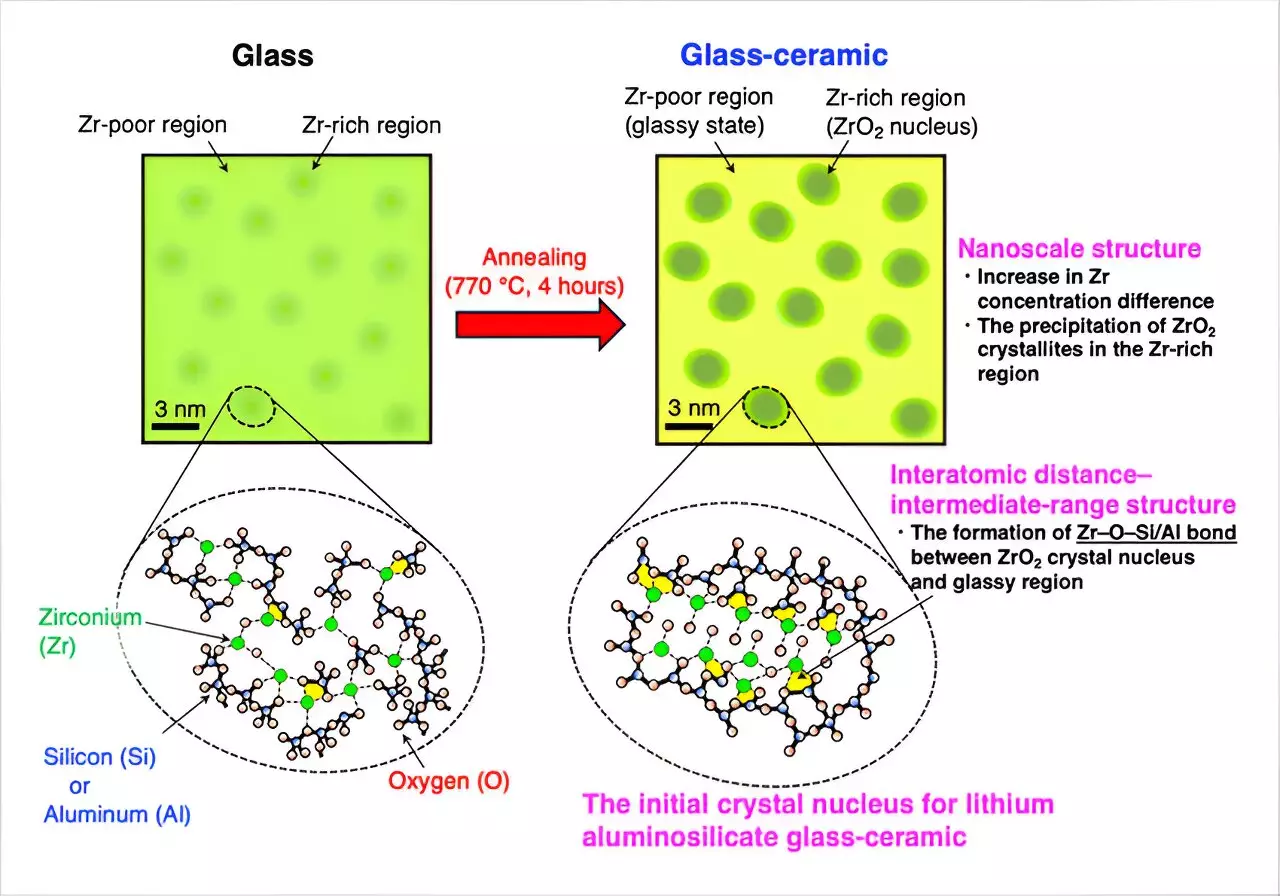A groundbreaking collaboration between the National Institute for Materials Science (NIMS), AGC Inc., and the Japan Synchrotron Radiation Research Institute (JASRI) has brought to light the intricate processes involved in the evolution of glass into glass-ceramics. This innovative study, recently published in NPG Asia Materials, explores the initial stages of crystallization—an essential transition for enhancing the durability and thermal resistance of glass materials.
The research team’s approach significantly marries advanced technology with materials science, showcasing the importance of synchrotron X-ray techniques for gaining insights into molecular behavior. This study endeavors to dissect crystal nucleation—the formation of crystal seeds within an amorphous glass matrix—and sheds light on how specific compositional designs can influence this transition.
Understanding Crystal Nucleation
Historically, the glass-to-glass-ceramic transformation has been marred by obstacles in fully comprehending the mechanisms at play during crystal growth. Prior research often left gaps in understanding how crystal nuclei interact within the glass environment. The NIMS-led team sought to address this by employing a multiscale structural analysis, which examined the nucleation at atomic and nanometer scales—a feat previously unaccomplished.
Focusing on zirconium oxide (ZrO2)-doped lithium aluminosilicate glasses, the team discovered that heat treatment not only altered the glass’s physical properties but also revealed stark concentration gradients of zirconium. These regions—marked as Zr-rich and Zr-poor—are pivotal in forming nanosized crystal nuclei, the initial building blocks for the newly created glass-ceramic material.
Pioneering Structural Insights
One of the notable aspects of this research is the introduction of Zr–O–Si/Al bonding structures surrounding the ZrO2 crystal nuclei. This discovery was made possible through advanced measurement techniques, and it provides the first evidence of how these bonds interact within the glass matrix. Understanding these connections is vital as they clarify the conditions that facilitate effective crystal growth.
The successful elucidation of these mechanisms signifies a leap forward for materials science, suggesting that the transitions that occur within the glass matrix can be anticipated and perhaps manipulated to achieve desired properties in final products.
The Future of Material Synthesis
The implications of this research extend beyond the theoretical; they set the stage for practical applications across various industries. With the capability of this technique to probe complex compositions and disordered atomic arrangements, a myriad of new functional materials awaits exploration. The team’s ambition transcends glass-ceramics, aiming to apply their findings to a broad spectrum of materials exhibiting unique properties.
In an age where material creativity is paramount, the quest for stronger, more efficient materials could catalyze advancements in technology, consumer products, and various engineering fields. The implications of this study are significant, not merely in expanding academic knowledge but in laying a foundation for the next generation of materials. With sustained exploration, the dream of developing innovative materials tailored for specific applications could transition from aspiration to reality.


Leave a Reply